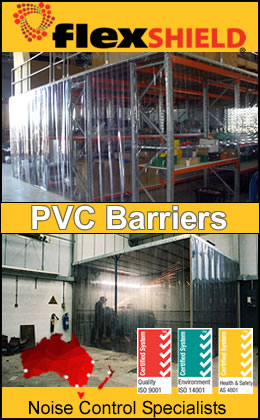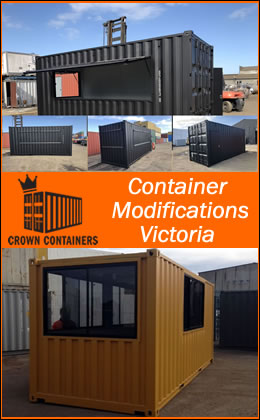History of Pallets
Pallet Evolved Along with Forklift
By Rick LeBlanc
Date Posted: 12/2/2002
After a company golf tournament in the early 1980s, a keen young pallet coordinator for a distribution center cornered a long retired grocery distribution manager at the 19th hole, eager to hear about the early days of pallets. The retired manager thought for a long while and finally offered some fleeting recollections, dating back to the late 1940s and 1950s. The veteran’s career had begun in an urban multi-storied warehouse with low ceilings, freight elevators, hand trucks and single-faced skids that were narrow enough to go through an ordinary door. His company constructed a new, single story warehouse in the 1950s that paved the way for much greater use of forklifts and pallets.
The young pallet coordinator had a lot of questions about the history of pallets and pallet handling and fired them off quickly. What were the early pallet sizes and styles? Were they made of hardwood or softwood? How about handling and forklifts? When did product first start arriving palletized from suppliers versus being palletized at the loading dock?
“It was a mix, really,” the veteran said absent-mindedly, combining a summary, conclusion and polite brush-off. Without further comment he slipped back to his table of other retirees and dove into an animated conversation — undoubtedly about a topic other than pallets.
Pallet History Overview
Still often unappreciated yet indispensable, the pallet has become fundamental to the world of modern material handling since the 1940s. Today even the most veteran front line employees of industries, such as grocery distribution and automotive assembly, have worked their entire lives with the benefit of palletized material handling.
Grocery industry veterans may have experienced changes evolving from counterbalanced lift trucks to reach trucks or automated storage and retrieval systems (and sometimes back again when new technology fails to meet expectations), but the practice of palletized load handling has been employed for many years. While many of them would be hard pressed to remember material handling before the spread of palletization, industry veterans who retired only a few decades ago, like the one mentioned above, likely would remember handling systems that were substantially different than the current generation. Palletization has evolved over the last 105 years or so, spurred into prominence since World War II.
While other forms of unitization predated the development of the palletized unit load, it was the pallet, in conjunction with the lift truck, that was destined to have the most dramatic impact on material handling. The development of the pallet, so pervasive in today’s distribution environment, is integrally related to the introduction and evolution of the lift truck, which began in the late 19th century. While unitization technology emerged during the 1920s-30s, its adoption was not a priority during the Great Depression due to high unemployment, lack of investment capital and a number of other factors.
With the entry of the U.S. into World War II, however, the urgency for material handling reform changed almost overnight. Palletization was regarded an enormous opportunity to help the U.S. armed forces do more with less. Palletized loads could handle more goods with fewer people, freeing up men for military duty; it also could increase warehouse storage capacity and throughput, reducing the need for additional warehouse capacity. Pallets were used somewhat in the European theater, but they were put to work extensively in the Pacific. By the end of the war, the benefits of material handling with pallets had been clearly demonstrated on the world stage.
Transport Packaging
While pallets have been an important component of the material handling world for roughly only the last 50 years, the business of material handling is as old as the history of commercial trade itself. The use of packaging in general became much more prevalent after the start of the industrial revolution. Skids and pallets were ever so slowly introduced throughout the early decades of the 20th century; wooden boxes, crates, barrels and kegs were much more commonly used to unitize, protect, store and transport goods. Barrels had the unique advantage of being both container and conveyance: they could be tipped onto the side and rolled from cart to dock or from wagon to store room. In the decades after the invention of the sewing machine in 1846, textile sacks became favored for packaging granular products such as flour, sugar and feed. The transition of wooden packaging to corrugated packaging was another important shift during the first half of the 20th century. Corrugated paper was invented in the 1850s, and corrugated shipping containers first started to replace wood around 1900. There was a growing recognition by industry that it could reduce packaging and transport costs by shifting to more inexpensive and lighter paper-based packaging materials.
This trend was aided by the gradual acceptance of corrugated packaging by rail and road freight authorities. The railroads, the dominant transport mode of the era, authorized the use of solid fiberboard and corrugated packaging for many types of products in 1914. In 1935 the motor carriers adopted packaging rules, which often called for fiberboard boxes for many products. The trend toward corrugated and fibreboard containers began in earnest before palletization became a significant factor, although the pallet would over time come to provide superior protection to unitized corrugated containers. It is probably a safe assumption that the introduction of pallets into industry from the 1940s onward allowed new opportunities for corrugated to spread to distribution channels facing harsher handling environments.
Beginnings of Palletization
Within the broader context of transport packaging, the predecessor of the wooden pallet was the wooden skid, which consisted of stringers fastened to a top deck. It first appeared in American factories in conjunction with the low lift truck. A crude low lift hand truck was invented in 1887 that could elevate a skid a few inches by manual means. A more durable, all-steel low lift truck design was introduced in 1909.
According to the late Emil Holzwart, a consultant well known to the pallet industry in his time, skids were often constructed with a solid deck, typically with 2-inch deck lumber and high stringers (7 inches) by today’s standards. The design would allow adequate entry clearance for manually operated trucks. Forks were raised by the operator pumping the handle, and the mechanism typically was of ratchet or pneumatic design. Normal pallet widths ranged from 30 inches to 42 inches in order to facilitate easy carriage around the plant. The skid was used for moving materials within manufacturing plants and shops.
Another important benchmark in the development of the pallet was the introduction of the high lift fork truck. With its first appearance in 1915, lifting capability was limited. With further modification in 1919, the truck could lift loads several feet high while other improvements included cantilever design and forks. Cantilevered trucks did not require clearance under the load for protruding front tires. The emergence of forks as well during the same period enabled lift trucks to handle a much greater range of materials.
There were other notable improvements from 1919-1925. By moving the motor of the truck behind the operator, the counterbalanced lift truck was developed. This innovation not only provided a shorter wheelbase, but it afforded more protection to the operator with the fulcrum of the truck now over the front wheels. The weight of the load carried in front of the wheels was counterbalanced by the weight of the motor in the rear of the truck.
Another development was the new capability of the mast to tilt both forward and back, independent of the lifting mechanism. These developments, along with the emergence of the double-faced pallet during the same time period, allowed for tiering of unit loads. As early as 1926, the essence of the modern lift truck had been developed. Now, pallets no longer were simply a means of moving materials within the plant. High lift trucks made possible vertical stacking of unit loads and a resulting dramatic improvement of warehouse and plant storage efficiencies.
Pallet Evolved
The pallet evolved in stages. Spacers were used between loads to allow fork entry, progressing to the placement of boards atop stringers to make skids. Eventually boards were fastened to the bottom to create the pallet. The use of pallets was not necessarily critical to the stacking of all loads, however. The major requirement of stacking was the availability of spacing for fork entry. Loads such as lumber had adequate bridging strength so as not to require the support of a skid deck. For this type of load, entry spacing was often accomplished by the placement of spacers or 2x4s under or between unit loads. This process, however, involved the potentially unsafe and time consuming practice of the operator frequently climbing out on the front of the lift truck to place the 2x4s or having them placed by another worker. The driver might also have had to frequently dismount to hunt for 2x4s to replenish his supply.
Not all loads lent themselves to flat stacking. The 2x4s did not always rest on a solid base. Spillage and precariously stacked loads were said to be a common sight, according to Holzwart. While better stacking practices were initiated at the machines, it was not always possible to avoid crowning or overlapping at the top of the load. The use of spacers allowed double and triple stacking, but the dangers soon called for better solutions.
By attaching the 2×4 stringer to the top deck boards to form a single faced skid, the forklift operator no longer had to place 2x4s or replenish his supply; as a result, he became more productive and activity was less hazardous. The skid bottom deck allowed for stacking a wider range of products and for higher stacking heights.
The addition of bottom boards on the skid, which appeared by 1925, resulted in the pallet. With the bottom deck, several problems common to the single faced skid were addressed. For example, the bottom boards provided better weight distribution and reduced product damage; they also provided better stacking strength and rigidity. Lift truck manufacturers promoted the idea of using more vertical area of a plant for stock storage. The telescopic lift and pneumatic tires of the lift truck, coupled with a short turning radius, now allowed them to be used in close quarters, on wooden floors in buildings with low ceilings. Materials could be double stacked even in a building with a 10-foot ceiling. The lift truck, therefore, became a mechanical and mobile means for lifting stock into a storage area.
Impact on Rail Cars
Pallets and forklifts also provided much quicker turnaround of rail cars and ships. According to an article in a 1931 railway trade magazine, three days were required to unload a boxcar containing 13,000 cases of unpalletized canned goods. When the same amount of goods was loaded into the boxcar on pallets or skids, the identical task took only four hours. Pictures in trade magazine images of the 1930s show pallets used for handling materials such as bags of flour and pulp sheets for veneer. An account of a Filipino immigrant working in the Alaska fishing industry described palletization and stacking of skids of canned salmon around 1939. With loads now stacked up to three tiers high, early unit load stock tagging systems started to emerge as a means to better control inventory.
At this point in time, however, skids were expendable and often were poorly constructed. They were made from locally available lumber and manufactured in small lots.
The earliest record of large scale pallet production was NEPA Pallet of Snohomish, Wash. According to Bill Sardo, first director of the National Wooden Pallet and Container Association, NEPA was the first pallet manufacturing business. It was formed by Walter Crook along with three partners in 1937 to fill a cost-plus government contract to supply ‘dock boards’ or stevedore pallets to the U.S. government. Many of the company’s pallets were shipped to docks in Long Beach, Calif. via rail car, according to Walter’s son-in-law, Gene Shrier, who eventually took over NEPA.
The cargo boards had a 4-foot-by-6-foot footprint. They were a 6-inch double-wing design with trimmed corners. Deck boards were made of 2-inch Douglas fir and stringers were 4×4 Douglas fir. They were assembled with 3/8-inch carriage bolts; each cargo board required 32 carriage bolts. NEPA had work stations with automatic drill jigs to bore holes in deck boards and stringers. Four or five people worked at each station, and the company ran two shifts. After the U.S. entered World War II, many of the men working at NEPA went into the military, and the production jobs were filled by women.
While many accounts of the pallet industry point to World War II as the era when it began, the foundation for pallets and palletized material handling had been set prior to the war. Because of abundant labor, lack of suitable warehouses and facilities, and a shortage of capital to invest in the latest technology, however, it remained in infancy. With the advent of World War II and U. S. involvement, the emerging technologies of palletization were viewed as an important advantage in the war effort and truly become a force in the materials handling world.
Thanks to http://www.timberlinemag.com/articledatabase/showarchive.asp?topicid=70




